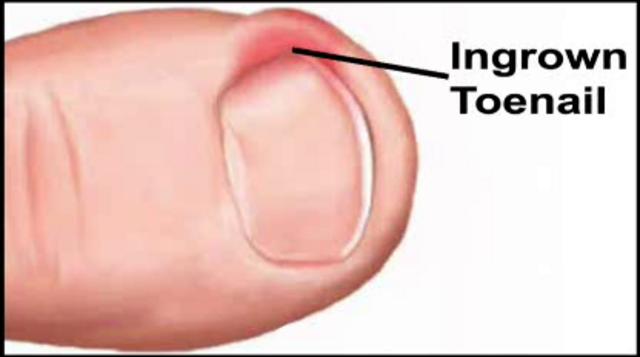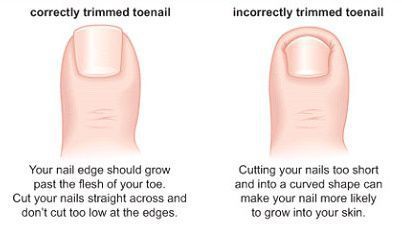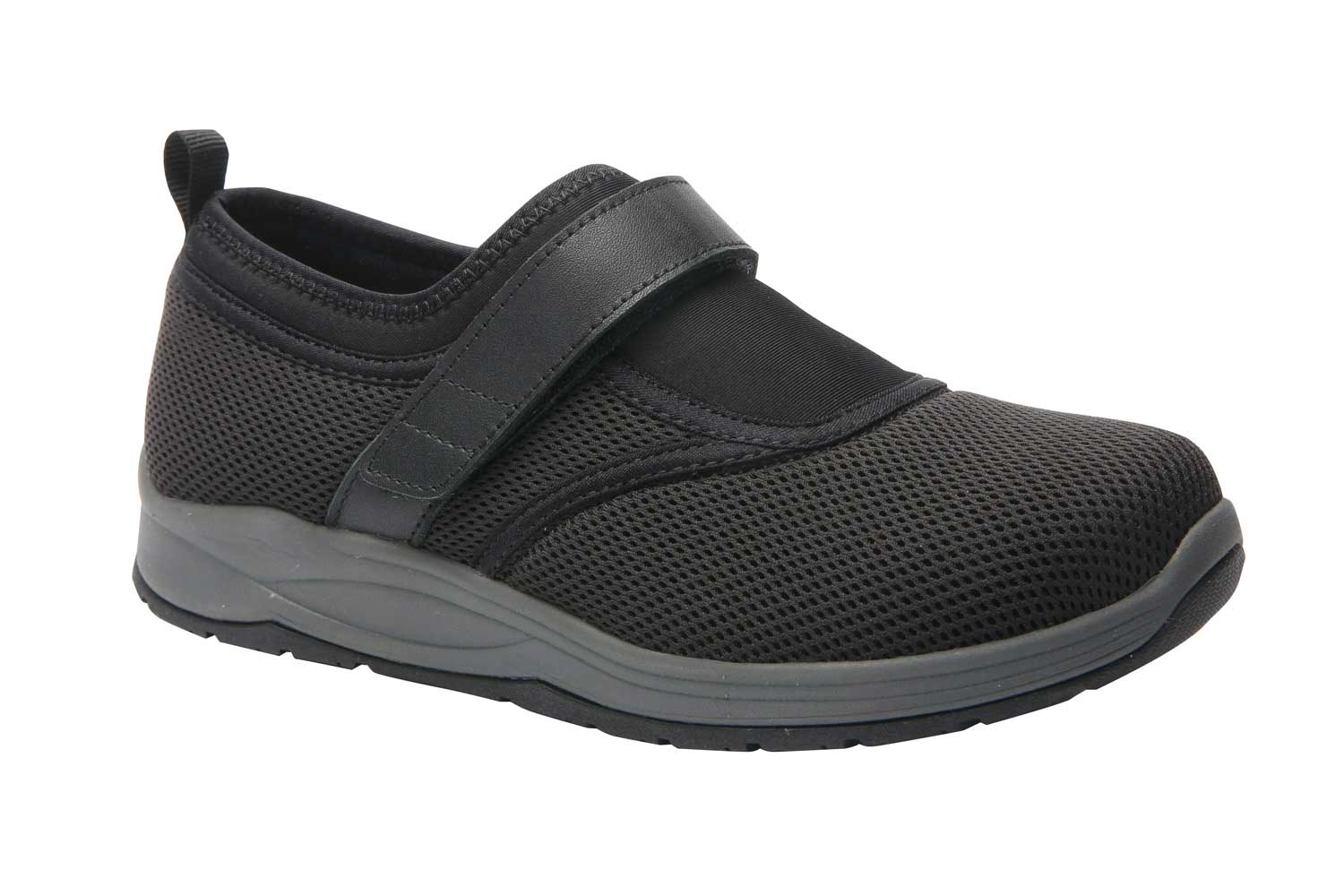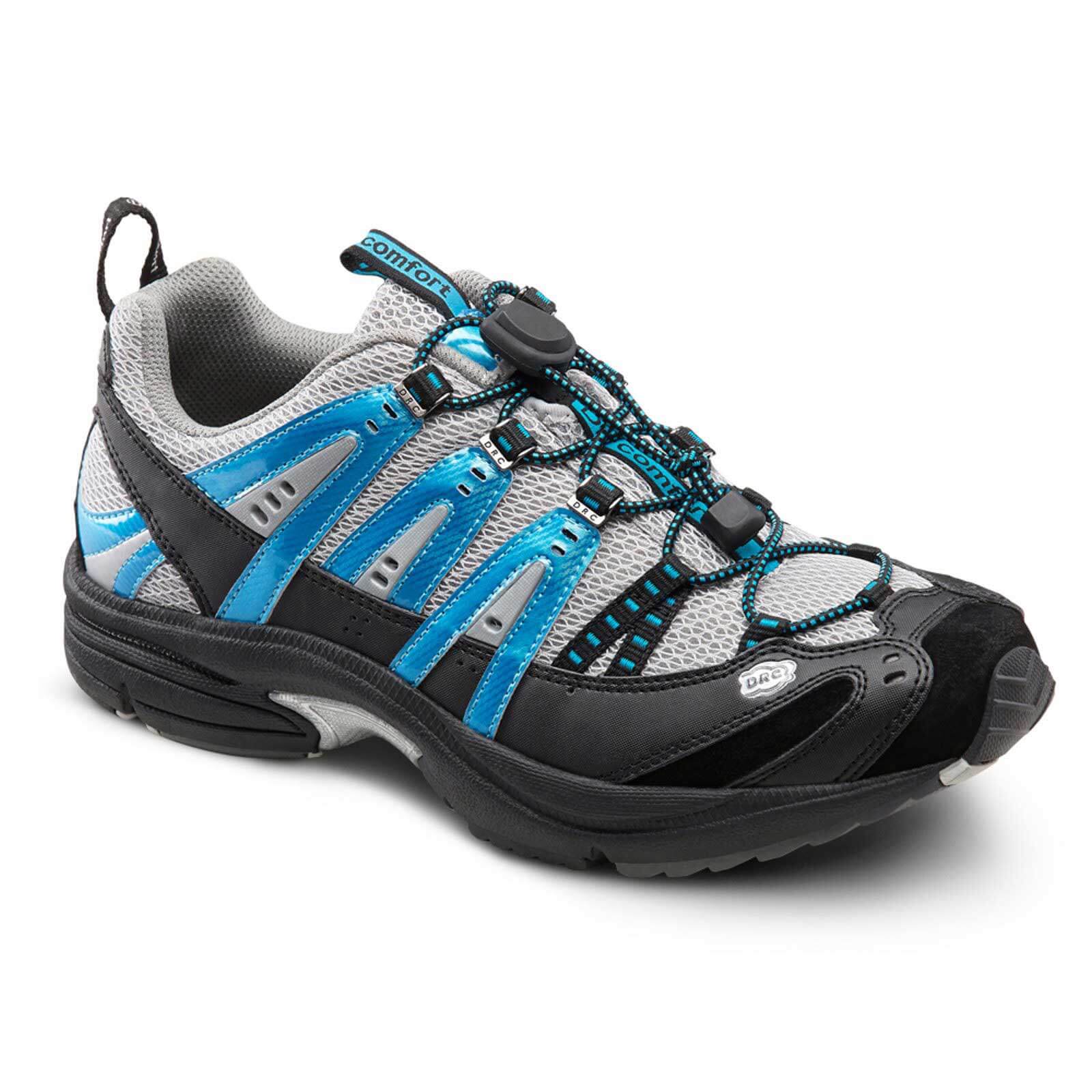|
Ingrown toenails are a common problem and affect millions of Americans every year. Certain factors or habits may increase your likelihood of developing this health problem, including poor eyesight, physical limitations, anatomical quirks, and poor trimming habits. 
Poor vision and an inability to reach your toes easily—two factors common among elderly individuals—can lead to improper trimming of your nails and ingrown toenails. Some people possess thicker-than-usual nails, which is another factor that may increase your risk for ingrown toenails. And poor trimming habits, including picking or tearing the corners of your toenails, and stubbing your toe may also contribute to this health problem.
Ingrown toenails develop when the edge of your nail grows into the skin of your toes, causing pain, redness, and swelling near your nail. Ingrown toenails, though not a life-threatening health problem, can cause significant pain or discomfort in your affected toe. In severe cases, the infection caused by your ingrown toenail may spread into your toe bones. Ingrown toenails can affect any of your toes, though your big toe is most vulnerable to this health problem. Here are some tips for avoiding ingrown toenails. 1. Trim your nails properly
- Always use toenail clippers, not fingernail clippers to trim toenails. These larger clippers are meant for larger nails, and you’ll be less likely to damage or split your nails if you use the right tool.
- Disinfect toenail clippers by cleaning them with rubbing alcohol before and after use.
- Never tear your toenails to trim them.
- Trim toenails straight across the width of your toe. Don’t cut your toenails into a curved or v-shape.
- Don’t cut your toenails too short – toenails should be even with the tips of your toes. When toenails are clipped extremely short, they have a tendency to grow into the surrounding skin.

2. Choose the right shoe size & shape Be sure to choose shoes that are wide enough so they don’t squeeze your toes or push your big toe inward. Shoes that put too much pressure on your toes can cause the toenail to grow into the surrounding tissue. Normal shoe stores tend to carry only one width of shoes, and if you require any width outside the norm, you may find yourself trying on shoes that are far too big, just to fit the width. Check out our shoes, available in a large range of widths and sizes, to ensure you're wearing the perfect fit. 
Women's Drew Shoes - Morgan
available in several widths
3. Avoid tight, restrictive socks & pantyhose Avoid tight-fitting socks, or wearing pantyhose for long periods of time. This is especially important if you have flat feet, or other foot conditions that cause your foot to overpronate, or roll inward when you walk. This puts more pressure on the side of your toenails and increases the likelihood of an ingrown toenail. 4. Don’t trim, or pick at toenail cuticles Many pedicurists automatically trim or cut your cuticles as part of the service. Ask your pedicurist to push back your cuticles instead of cutting them. When doing your pedicure at home, use a moistened orange stick to gently push back cuticles that may be too long. Keeping cuticles intact is important, since they help protect against harmful bacteria and fungus that can cause both a fungal nail infection and lead to the infection of an ingrown toenail. 5. Protect toes from injury Always wear shoes when walking around, even at home. If your work puts you at risk of injuring your toes, wear protective footwear like steel-toed shoes. If you have diabetes, check your feet daily for signs of ingrown toenails or other foot problems. 
Men's Dr. Comfort Performance- available in a several different widths
By following these simple steps, you can prevent the pain of ingrown toenails. When it comes to ensuring the perfect fit, we’re experts! Give us a call so that we can help you match the right shoes with your feet and your lifestyle. We’re happy to help. |